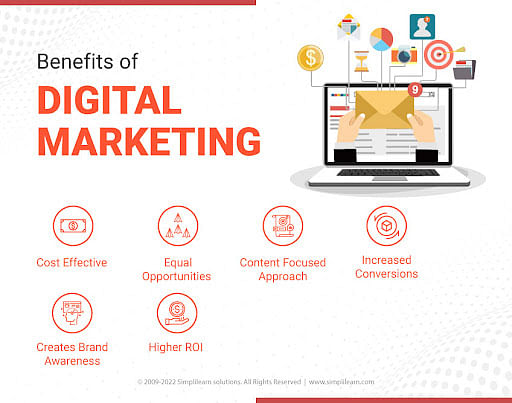Enhance Customer Experience and Drive Traffic With Responsive Website Design
In today's digital landscape, where individuals are accessing websites from a plethora of devices, receptive website design has actually come to be extra vital than ever. With its capability to adapt and perfectly get used to different screen dimensions, responsive layout not only enhances user experience but likewise drives website traffic to your website. Yet why is this design technique so critical? How does it enhance individual interaction and rise internet site traffic? In this conversation, we will check out the essential aspects of effective responsive layout, explore the ideal practices for its application, and discover the secrets to boosting customer experience while driving more web traffic to your internet site.
Why Responsive Internet Style Issues
Responsive internet layout is a vital facet of modern-day internet growth as a result of its capability to guarantee ideal individual experience throughout numerous gadgets and screen dimensions. With the spreading of mobile phones, tablets, and various other smart phones, it has ended up being important for websites to adjust and offer seamless functionality no matter of the gadget being utilized.
The main reason that receptive web layout matters is that it allows customers to have a pleasurable and constant surfing experience, regardless of the tool they are utilizing. A responsive website automatically adjusts its material, design, and style elements to fit the display size and resolution of the device, making sure that users can easily connect and navigate with the site without any type of hassle or frustration.
Furthermore, receptive web design likewise plays a considerable function in search engine optimization (SEO) Online search engine, such as Google, prioritize websites that are responsive and mobile-friendly in their search outcomes. By incorporating receptive layout principles, websites can improve their exposure and ranking, leading to increased natural website traffic and prospective consumers.

Boosting Individual Involvement With Responsive Layout
Optimizing customer engagement is a crucial goal of receptive layout, as it ensures that customers can quickly access and connect with site web content on any gadget. With the boosting use tablet computers and smartphones, it is vital for internet sites to adjust to different display sizes and resolutions. Receptive style allows web sites to instantly change their layout and material to offer a smooth user experience across gadgets.
Among the major means responsive style increases customer interaction is by minimizing lots times. With a responsive web site, individuals don't have to await different mobile versions to lots, leading to faster accessibility to content. This enhanced rate leads to higher individual contentment and urges them to invest even more time on the site.
In addition, receptive design boosts customer interaction by enhancing navigating and individual interface (The Ad Firm web design agency). When a website is developed responsively, food selections and switches are maximized for touch communications, making it easier for customers to communicate and navigate with the website on their smart phones. This easy to use and user-friendly experience keeps users engaged and motivates them to discover more of the internet site
Additionally, responsive layout allows for much better web content presence and readability. By adapting the design and typeface dimensions to different devices, receptive internet sites guarantee that customers can conveniently check out and understand the material. This improves individual interaction by decreasing the requirement for zooming or scrolling to read the message.
Enhancing Site Traffic With Responsive Web Design
With the expanding appeal of mobile phones, having an internet site that is responsive to various screen dimensions and resolutions is important for driving raised website traffic. In today's electronic landscape, users are accessing web sites from a selection of devices such as smart devices, tablets, and home computer. Each of these devices has various screen sizes and resolutions, and if your internet site is not designed to adjust to these variations, it can result in a bad user experience and a loss of prospective web traffic.
Receptive website design makes sure that your web site looks and operates efficiently throughout all devices. By making use of versatile grids, liquid photos, and media questions, receptive design allows your site to immediately adjust its format, navigating, and material to fit any screen size. This means that users will have a seamless surfing experience no matter of whether they are making use of a little mobile phone or a big desktop computer system.
Crucial Element of Effective Receptive Style
Efficient receptive layout incorporates several key components that ensure a seamless individual experience across various gadgets. This enables content to be displayed in a visually enticing and understandable fashion on any type of tool.
An additional crucial element is media inquiries. These permit designers to use various designs and designs based upon the characteristics of the customer's device, such as screen dimension and positioning. By utilizing media questions, developers can enhance the presentation of content for every tool, guaranteeing that it is easily accessible and understandable.
Responsive images are likewise essential in reliable responsive design. Pictures that are also large can reduce web page tons times on mobile phones, while images that are also little might show up pixelated on larger screens. By utilizing strategies such as receptive picture resizing and lazy loading, developers can make certain that pictures are suitably sized and optimized for every gadget.
Last but not least, effective receptive style involves a mobile-first technique. This implies making and prioritizing web content for smart phones initially, and after that broadening and boosting the style for bigger screens. This method guarantees that one of the Get the facts most essential web content is conveniently obtainable on smaller screens, while still providing an abundant experience on bigger gadgets.
Best Practices for Carrying Out Receptive Website Design
Implementing receptive internet design calls for careful factor to More hints consider of various ideal methods to guarantee an ideal customer experience throughout various tools. When executing responsive web design., below are some vital ideal methods to adhere to.
Firstly, it is important to prioritize mobile customers. With the enhancing dominance of mobile devices, creating for mobile-first has actually come to be crucial. Start deliberately for smaller sized displays and then considerably enhance the layout for larger displays.

One more essential ideal method is to maximize photos for different display resolutions. Huge images can decrease the loading time of your web site, especially on smart phones with slower connections. Usage receptive pictures that can be resized based upon the gadget's display resolution to boost performance.
Additionally, test your internet site on different gadgets and display sizes to ensure a smooth and constant experience. There are numerous testing devices available that can help you recognize any type of concerns and make essential adjustments.
Finally, focus on use and access. Make certain that your website is very easy to browse, with clear and succinct web content. Make certain that your web site is accessible to people with specials needs and complies with ease of access guidelines.
Final Thought
In verdict, responsive web layout plays a vital duty in boosting user experience and driving web traffic to websites. By taking on receptive layout concepts, web sites can make certain optimum watching experiences throughout various tools, leading to raised individual engagement.
Enhancing individual involvement is a vital objective of responsive style, Full Report as it makes sure that customers can easily access and communicate with internet site content on any gadget. Responsive style enables internet sites to immediately adjust their layout and web content to offer a seamless user experience across tools.
Additionally, responsive design boosts user engagement by boosting navigating and customer interface.Responsive photos are likewise critical in reliable responsive design. By taking on responsive style concepts, web sites can make certain optimum seeing experiences across different gadgets, leading to increased user interaction.